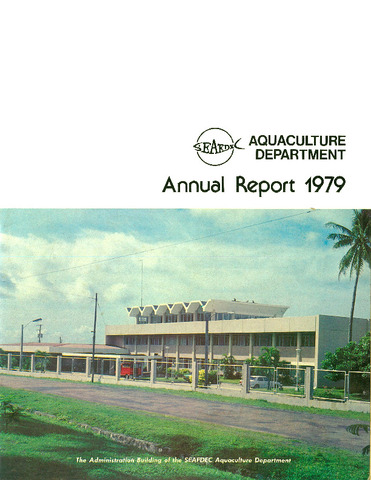The milkfish fry shortage in the Philippines and supply from fisheries and hatcheries
| dc.contributor.author | Bagarinao, Teodora | |
| dc.date.accessioned | 2013-04-15T06:41:01Z | |
| dc.date.available | 2013-04-15T06:41:01Z | |
| dc.date.issued | 1997 | |
| dc.identifier.citation | Bagarinao, T. (1997). The milkfish fry shortage in the Philippines and supply from fisheries and hatcheries. UPV Journal of Natural Sciences, 2(2), 138-158. | en |
| dc.identifier.issn | 0118-461X | |
| dc.identifier.uri | http://hdl.handle.net/10862/1576 | |
| dc.description.abstract | This paper reviews the history and status of the milkfish fry fishery and hatchery and examines the issue of fry shortage in some detail. The fry fishery in the Philippines is a well developed industry that uses efficient indigenous technology, employs a quarter-million people, and provides income to local governments through fry ground concessions or fry gathering permits. The fry fishery is determined by where and when milkfish spawn. Fry perishability and the lack of an accurate accounting method shape industry practices and make it difficult to quantify the fry supply. Catch data are lacking, but the milkfish production of 100,000-240,000 mt indicate that fry catches ranged 0.8-2 billion a year during the past 25 years, and averaged at least a billion a year during the last five years. Milkfish farming has intensified in brackishwater ponds (especially in former shrimp farms) and has expanded into freshwater and marine pens and cages. However, there are no data on the farm areas currently under operation under different stocking rates, and fry requirements can only be roughly estimated for a given set of assumptions. If the Philippines double its current total milkfish production to 300,000 mt to support a larger population, then hatcheries would have to provide about one billion fry, in increments of perhaps 100 million a year, over the next decay. About 1000 females and 1000 males are required 100 million fry. Milkfish broodstock and hatchery technologies suitable for the Philippines have long been developed by the SEAFDEC Aquaculture Department, but only recently caught the attention of Filipino hatchery operators and milkfish farmers. On the other hand, milkfish farming is market-driven and profit- motivated and intensification can not prosper when production cost is high and farm-gate price is low. Under these conditions, the fry shortage is not immediate and the private sector has time to establish milkfish broodstocks and hatcheries. Refinement are needed in a fry fishery, hatcheries, grow-out operations, post-harvest processing and marketing – to assure increased production and the sustainability of the milkfish industry. | en |
| dc.language.iso | en | en |
| dc.publisher | University of Philippines in the Visayas | en |
| dc.subject | Chanos chanos | en |
| dc.subject | Philippines | en |
| dc.title | The milkfish fry shortage in the Philippines and supply from fisheries and hatcheries | en |
| dc.type | Article | en |
| dc.citation.volume | 2 | |
| dc.citation.issue | 2 | |
| dc.citation.spage | 138 | |
| dc.citation.epage | 158 | |
| dc.citation.journalTitle | UPV Journal of Natural Sciences | en |
| seafdecaqd.library.callnumber | VF SJ 0529 | |
| seafdecaqd.databank.controlnumber | 1997-16 | |
| dc.subject.asfa | seeding (aquaculture) | en |
| dc.subject.asfa | pond culture | en |
| dc.subject.asfa | fry | en |
| dc.subject.asfa | marketing | en |
| dc.subject.scientificName | Chanos chanos |
Files in this item
| Files | ขนาด | รูป | View |
|---|---|---|---|
|
There are no files associated with this item. |
|||
รายการนี้ปรากฏใน (s)
-
Journal Articles [1215]
These papers were contributed by Department staff to various national and international journals.



